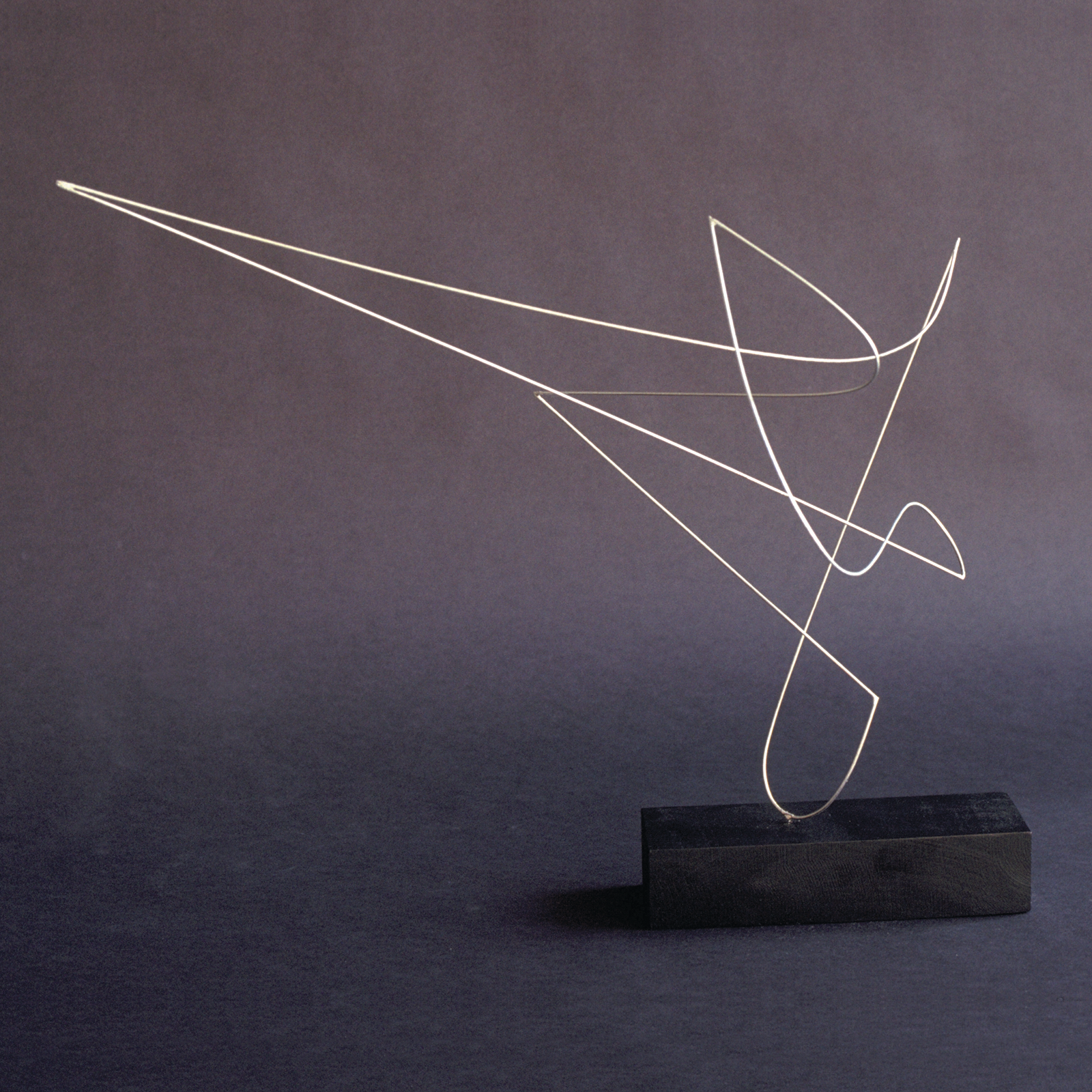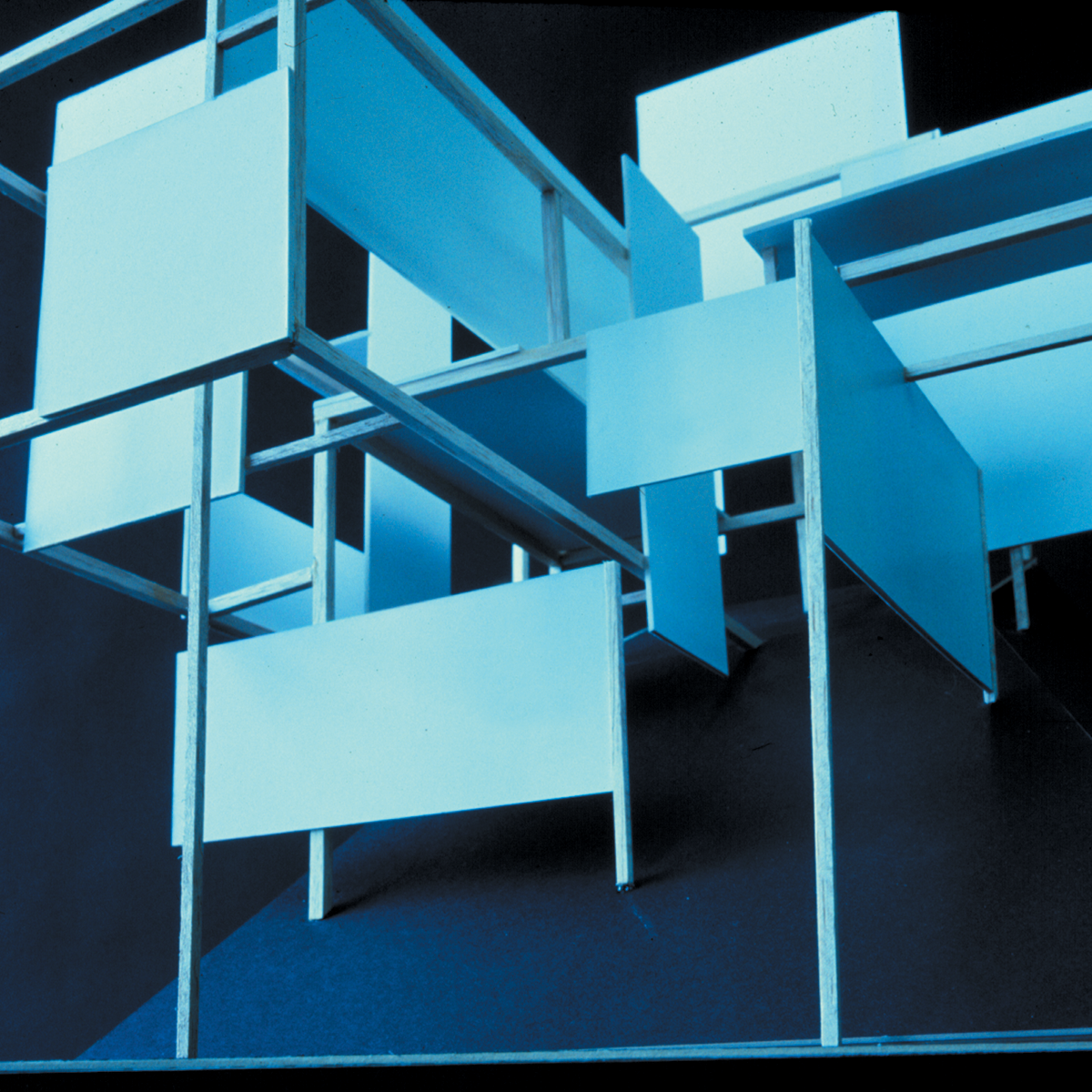“The objective of this exercise is to gain an understanding of the characteristics of planes and how they relate to each other in space. In this problem you are asked to create a beautiful construction using a variety of planes.”

Two-Dimensional (Flat) Planes are characterized by their axes:
- In Straight Axis Planes, the axis moves straight across the plane. The edges of the plane express the direction of the axis.
- In Bent Axis Planes, the axis moves across the plane’s surface in one direction and then shifts in another direction. The plane is flat, but the axis is bent.
- In Curved Axis Planes, the edges are curved, causing the axis to curve. The plane remains two-dimensional.
- In Complex Axis Planes, the axis changes direction (there are infinite possibilities). However, no matter how complex its route is, the outer edges of the plane visually “add up” to the course of the plane’s movements.
In general, the edges of a plane should express the axis. If the intention is to maximize the power of the “plane,” the eye must move across the plane’s surface, not around its outside edge. Visual continuity across space is based on the way the surfaces slant. The edges of planes should never be shapes (movements) in themselves. They must relate to the whole.
When one edge of a plane is cut, it affects all the other edges, thus influencing the movement of the axis. Our challenge is to see how well we can control the visual experience.
Three-dimensional planes are of four types:
- In a Curved Plane, the surface curves into more than one plane but does not twist through the transition. It is a simple curved surface.
- In a Broken Plane the plane bends in space at a hard edge through the transition.
- In a Twisted Plane, as the plane moves in space, it twists, shifting the axis on its surface.
- In Grouped Planes, three or more planes create a group movement or gesture. (Flat planes can also form a group.)
Begin by making a series of two- and three-dimensional planes. For sketching, use cardboard, Bristol board, construction paper, oak tag, tape, stapler, glue gun and pellets, and wire, if needed for support. Experiment with proportion and character to experience the infinite potential of these forms. In all cases, the edges must visually express the desired axis and the quality of the plane.
Note: Cut the outside edges of planes to make them curve in space; do not draw curved lines on paper to represent a desired curve. Forget about the outline. Start with a rectilinear surface and curve it to the desired shape in your hands. Just make a beautiful gesture. Hold in position and pencil in the changes. Cut a little at a time.
Next, do some three-dimensional sketches of ideas for exciting forms that might be created by planes shifting direction and slanting in space. Work with a combination of straight, bent, curved, broken, and twisted planes. You can tape them, glue them, notch them, attach them with tiny wires, and leave some standing alone. Experiment with vertical and horizontal orientation. Develop relationships between planes across negative space.
Here, you create the design statement that keeps you on course as you develop your construction. If you do not have a strong design statement at the beginning, the analysis, rather than your visual intent, overtakes the idea. This is the “passionate” phase. Do it quickly, spontaneously, faster than your conscious mind can detect. Afterward, we will look at the ideas and refine them.
This is a challenging problem. However, it allows you to express something that is visually your own. It will draw on your talent and creativity. Be patient. It may take you many hours to create an assemblage of planes that looks like something more than a pile of paper. Persevere until you have some examples that express a clear statement.
At this point, you may want to do some proportion sketches to evaluate and adjust your overall design idea.
Now, you are ready to develop and refine your design statement. Focus on establishing two or three group movements. Try to activate the negative space between and around groups of planes. Establish tensional relationships between groups of planes.
Your planar construction should express the following:
- Complementary contrast in types of planes
- Complementary contrast in proportion
- Harmony between the edges of planes and their axes: The edges should reflect the movement of the planes.
- Dependent balance: The positions of individual planes and groups of planes should ‘add up’ to create a sense of visual balance from all directions.
- Space as position: Each plane should have a distinct direction in space. The number of positions should equal the number of individual planes.
- Space as opposition: When planes have discontinuous axes (i.e., the axis of one does not lead to the axis of another), visual continuity across space is achieved by the way the surface slants “add up.”
- Group movement: A plane’s direction, axis, and slant (tipping of the surface) are continued by a change in the axis and slant of another plane. The visual character of the transition is determined by the angle of the line of intersection between the two planes. The intersection should happen at a place that feels natural in space—it should not feel like an arbitrary bend.
Before executing your planar construction in final materials:
- Make a box frame using sticks and glue.
- Make your open box in a proportion that best fits your design statement.
- Make a short-hand version of your design within the box, using just a few planes and including the major movements.
- Study the space in and around your planar construction.
- Note that as the planes are slanted and tipped in space, the shifts affect the space—they can either kill it or make it come alive.
Once you have achieved a sketch in which proportions, position, movements, and plane edges are pleasing, construct the design in final form using 3-ply Bristol board or museum board (2 or 3-ply) and optional metal and/or styrene.






















